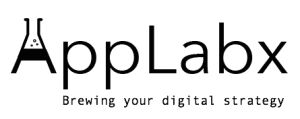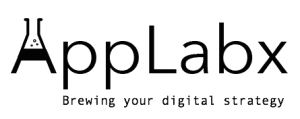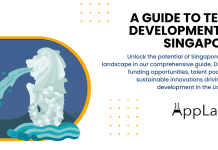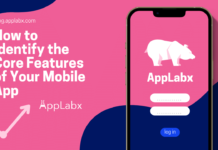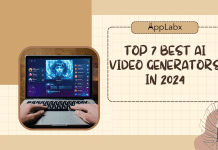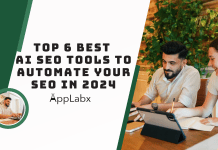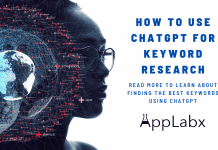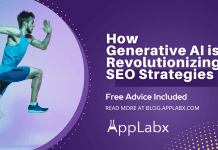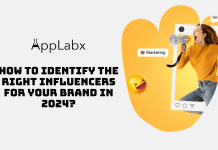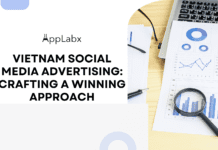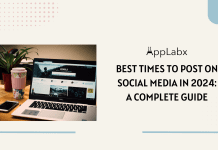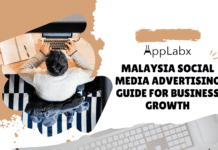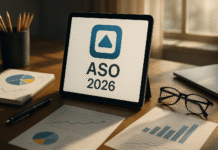Key Takeaways
- AI marketing in 2025 enables hyper-personalization, automation, and data-driven decision-making for improved campaign performance.
- Businesses must adopt ethical AI practices, prioritize data privacy, and invest in employee upskilling to stay competitive.
- Starting with small pilot projects and scaling gradually helps maximize ROI while minimizing implementation risks.
Artificial Intelligence (AI) has rapidly evolved from a futuristic concept to a central force driving innovation in nearly every industry — and marketing is no exception. As we step into 2025, AI marketing has become one of the most transformative pillars of digital strategy, redefining how brands connect with their audiences, personalize customer experiences, and measure business impact. For beginners and marketing professionals alike, understanding AI is no longer optional — it is a crucial skill for remaining competitive in a marketplace where speed, data-driven insights, and personalization determine success.

This comprehensive guide aims to demystify AI marketing, providing a detailed, actionable, and beginner-friendly blueprint for navigating the new era of digital marketing powered by machine learning, predictive analytics, and generative AI. Readers will discover not only what AI marketing is but also why it matters, how it is used across industries, and what steps they can take to implement it effectively in their own strategies.
Why AI Marketing Matters in 2025
AI has shifted from being an experimental add-on to becoming the backbone of modern marketing campaigns. From hyper-personalized product recommendations to predictive customer segmentation, AI enables brands to deliver tailored messages at scale, boost conversion rates, and make smarter budget allocations. According to industry reports, businesses using AI-driven marketing strategies have seen measurable results, including a 10–30% boost in ROI, reduced customer acquisition costs, and significant improvements in audience engagement.
AI also empowers small and mid-sized businesses, giving them access to the same powerful tools that global enterprises use. This democratization of advanced technology means that even startups can compete with larger players by leveraging automation, content generation, and AI-powered analytics to level the playing field.
The Beginner’s Learning Curve: Making AI Accessible
For many, AI still feels complex and intimidating — a technology reserved for data scientists and engineers. This guide breaks down AI marketing into practical, easy-to-understand concepts that any marketer, business owner, or entrepreneur can adopt. From understanding natural language processing (NLP) and machine learning models to learning how to use AI tools like ChatGPT, Jasper AI, Surfer SEO, and others, readers will be equipped to integrate AI seamlessly into their workflows.
What This Guide Covers
This beginner’s guide is structured to offer both a strategic overview and hands-on insights. It explores key areas such as:
- AI-Powered Personalization: How machine learning tailors messaging to individual customer preferences.
- Content Creation with Generative AI: Using AI to produce high-quality blogs, social media posts, and ad creatives faster than ever.
- Predictive Analytics and Automation: Leveraging AI to forecast trends, automate campaigns, and optimize decision-making.
- Advertising and Search Optimization: How AI enhances programmatic advertising, bidding strategies, and search engine visibility.
- Ethics and Governance: Addressing data privacy, algorithmic bias, and transparency to maintain consumer trust.
The Opportunity and the Challenge
While AI presents a tremendous opportunity, it also brings new challenges that marketers must navigate carefully. Ethical concerns about data usage, the need for transparency in AI-generated content, and the requirement to upskill teams are among the most pressing considerations. Brands that view AI not just as a tool but as a catalyst for cultural and operational transformation will be the ones that lead in 2025 and beyond.
Why You Should Read This Guide
This guide was designed for those seeking to future-proof their marketing strategies and gain a competitive edge. Whether you are a small business owner dipping your toes into AI, a marketing student eager to understand the next wave of digital innovation, or an enterprise strategist looking for scalable solutions, this resource provides you with practical, actionable steps for success.
By the end of this comprehensive guide, readers will have a deep understanding of how AI is reshaping marketing, the tools that can deliver measurable results, and the roadmap required to implement AI-powered strategies responsibly and effectively.
But, before we venture further, we like to share who we are and what we do.
About AppLabx
From developing a solid marketing plan to creating compelling content, optimizing for search engines, leveraging social media, and utilizing paid advertising, AppLabx offers a comprehensive suite of digital marketing services designed to drive growth and profitability for your business.
At AppLabx, we understand that no two businesses are alike. That’s why we take a personalized approach to every project, working closely with our clients to understand their unique needs and goals, and developing customized strategies to help them achieve success.
If you need a digital consultation, then send in an inquiry here.
Or, send an email to [email protected] to get started.
AI Marketing 101: A Beginner’s Guide to Artificial Intelligence in Digital Marketing (2025 Edition)
- The New Marketing Landscape: AI Fundamentals and Market Dynamics
- The AI-Powered Marketing Funnel: Applications and Use Cases
- The Quantifiable Impact: ROI, Metrics, and Real-World Success
- The Path to Adoption: Costs, Tools, and Implementation Challenges
- The Strategic Roadmap: Ethical Imperatives and the Future of Work
1. The New Marketing Landscape: AI Fundamentals and Market Dynamics
Artificial Intelligence (AI) is no longer a futuristic concept in digital marketing; it has become a defining force that is reshaping how businesses engage with their audiences, interpret data, and drive growth. As we step into 2025, AI marketing is evolving from being a mere automation tool to becoming the strategic backbone of modern marketing ecosystems. This guide explores the core principles, market dynamics, and revolutionary trends that are setting the stage for the next era of marketing innovation.
Understanding AI in Marketing: The 2025 Perspective
Redefining AI’s Role in Marketing
AI in marketing refers to the integration of advanced technologies — including machine learning (ML), natural language processing (NLP), predictive analytics, and data-driven automation — to create intelligent, adaptive campaigns. Once seen as a solution for automating repetitive tasks such as email segmentation or keyword bidding, AI has now matured into a powerhouse capable of generating hyper-personalized customer journeys, uncovering hidden market opportunities, and enabling predictive decision-making.
From Generative AI to Emerging AGI
The shift from traditional automation to Generative AI (GenAI) was the first major leap, allowing marketers to create compelling ad copy, design visuals, and even generate code at scale. In 2025, the conversation is moving toward Artificial General Intelligence (AGI), a potential state where AI can learn, adapt, and execute tasks at near-human or superhuman levels. This trajectory signals that AI marketing is not just a temporary trend but a long-term transformation that will fundamentally alter how brands interact with consumers.
| AI Technology | 2023 Application | 2025 Evolution |
|---|---|---|
| Machine Learning | Predictive analytics, lead scoring | Real-time optimization, behavioral modeling |
| Generative AI | Content creation (text/images) | Multimodal creation (text, video, voice) |
| NLP | Chatbots, sentiment analysis | Context-aware conversational AI |
| Computer Vision | Image recognition | Video understanding, AR/VR marketing |
The Economic Impact and Growth of AI Marketing
The global AI marketing market is entering a phase of exponential expansion, with analysts projecting spending to surpass $89.85 billion by 2025. Some forecasts are even more ambitious, predicting a market value of over $107.5 billion by 2028, supported by a robust CAGR of 36.6% between 2024–2030.
Regional Dynamics
While North America remains the largest market, regions like India are witnessing unprecedented growth, with a CAGR of 28.5% expected during the same period. This surge reflects a global consensus that AI is no longer optional but essential for maintaining competitiveness in digital-first economies.
Strategic Budget Considerations
It is crucial for businesses to recognize that AI transformation budgets extend beyond software subscriptions. A comprehensive strategy includes:
- Technology Integration – Connecting AI tools with CRMs, analytics platforms, and marketing automation systems.
- Talent Development – Training teams to leverage AI insights effectively.
- Agency Partnerships – Collaborating with AI-first marketing agencies for custom implementations.
| Cost Component | Estimated Share of AI Marketing Budget (2025) |
|---|---|
| Software & Tools | 40% |
| Training & Upskilling | 20% |
| Agency & Consulting Fees | 25% |
| Infrastructure & Data | 15% |
This breakdown highlights that successful AI marketing requires a holistic investment approach rather than a narrow focus on tools alone.
Key AI Marketing Trends Shaping 2025
Rise of AI Agents and Workflow Automation
AI agents are emerging as enterprise-level “Chief Simplifier Officers,” capable of handling complex, multi-step workflows across marketing, sales, and customer experience. Deloitte predicts that by 2025, one in four enterprises using generative AI will deploy AI agents to streamline operations, improve decision-making, and reduce time-to-market for campaigns.
The Era of Multimodal AI
2025 marks a significant leap toward multimodal AI systems capable of understanding and integrating text, images, video, and audio. This enables marketers to create unified, contextually rich campaigns — for instance, generating ad copy aligned with a product video or analyzing customer sentiment from video testimonials.
Retrieval-Augmented Generation (RAG)
RAG systems are revolutionizing how AI accesses and synthesizes information. By combining external data sources with its own training, AI can produce real-time, contextually relevant responses — a game-changer for customer support, content personalization, and market research.
Human-Machine Collaboration
The narrative has shifted from “AI replacing marketers” to AI augmenting marketers. Leading enterprises are using AI to automate up to 75% of manual production tasks, allowing marketing teams to focus on creative strategy, brand storytelling, and customer relationship building. This symbiotic partnership is expected to be the defining feature of marketing departments in 2025 and beyond.
2. The AI-Powered Marketing Funnel: Applications and Use Cases
Artificial Intelligence (AI) is revolutionizing every stage of the digital marketing funnel — from awareness and engagement to conversion and retention — by creating a more intelligent, predictive, and customer-centric approach. As 2025 unfolds, AI is no longer just a supporting tool but the primary driver behind hyper-personalization, content generation, advertising efficiency, and search visibility.
Hyper-Personalization and Next-Level Customer Experience
Predictive Personalization at Scale
AI empowers marketers to create individualized experiences for millions of users simultaneously, a feat that would be impossible using manual segmentation. By leveraging predictive analytics, machine learning models, and audience clustering, businesses can forecast future customer behaviors, such as:
- Purchase Propensity: Identifying which customers are most likely to buy within a given period.
- Churn Prediction: Detecting users who may disengage or switch to competitors.
- Lifecycle Targeting: Delivering messaging tailored to where each customer stands in the buyer’s journey.
Retailers such as Target use AI to anticipate purchasing needs and send relevant promotions at the ideal moment, boosting engagement and sales.
Industry Case Studies
- Entertainment: Netflix and Spotify use collaborative filtering, deep learning, and reinforcement learning models to deliver ultra-relevant recommendations. For example, Spotify processes nearly 500 billion events daily to map relationships between songs, artists, and playlists, resulting in higher retention rates. Netflix’s algorithm-driven recommendations account for 80%+ of total viewing hours on its platform.
- Beauty & Cosmetics: L’Oréal’s ModiFace virtual try-on tool has surpassed 1 billion uses worldwide, with customers who engage being 3x more likely to convert than those who do not — illustrating how AI-powered personalization drives measurable ROI.
| Industry | AI Use Case | Impact/Metric |
|---|---|---|
| Retail | Predictive analytics, segmentation | Increased conversion rates, reduced churn |
| Streaming | Collaborative filtering, deep learning | 80%+ of watch time driven by algorithmic recommendations |
| Beauty | Virtual try-on (AR + AI) | 3x higher purchase likelihood |
AI in Content Creation and Creative Production
Generative AI as a Content Engine
Generative AI tools are now integral to modern marketing teams, accelerating the production of high-quality blogs, ad copy, emails, and social media campaigns. Studies indicate that 93% of marketers are already using AI to generate content more efficiently.
Real-World Examples
- Journalism: The Washington Post’s AI system, “Heliograf,” produced 850+ automated news briefs in a single year, freeing journalists to focus on in-depth investigative reporting.
- Branding & Advertising: Heinz’s iconic “AI Ketchup” campaign used AI-generated imagery based on prompts like “Renaissance Ketchup Bottle.” The campaign amassed 850 million earned impressions and delivered 2500%+ ROI over the initial media investment.
| AI Content Application | Example Brand/Use Case | Measured Outcome |
|---|---|---|
| Automated News Writing | The Washington Post (Heliograf) | 850+ stories in a single year |
| Generative Visual Campaigns | Heinz (AI Ketchup) | 850M earned impressions, 2500% ROI |
| Marketing Content Creation | Global brands | Faster production, higher engagement |
Advertising, Pricing, and Search Optimization
AI-Driven Advertising and Media Buying
Programmatic advertising, powered by AI, enables real-time ad placement and audience targeting that minimizes wasted spend. Companies like Airbnb have used AI to refine targeting parameters and maximize ROI, reporting stronger ad efficiency and higher annual revenues as a result.
Dynamic Pricing and Revenue Maximization
AI also plays a central role in dynamic pricing models. For instance, Uber adjusts ride prices in real time by analyzing demand surges, competitor rates, and even weather conditions — a strategy that boosts revenue while balancing supply and demand.
AI-Powered SEO and Search Visibility
AI is transforming search engine optimization by:
- Automating keyword research and SERP analysis.
- Predicting search trends and algorithm changes.
- Delivering hyper-optimized, intent-driven content.
Marketers have reported that 63% saw improved search visibility and organic traffic following the integration of AI-driven search overviews by leading search engines.
| Marketing Area | AI Application | Benefit/Outcome |
|---|---|---|
| Advertising | Programmatic bidding | Lower CPA, higher ROAS |
| Pricing | Dynamic price modeling | Real-time profit optimization |
| SEO | Predictive content strategy | Increased rankings and organic traffic |
3. The Quantifiable Impact: ROI, Metrics, and Real-World Success
Artificial Intelligence in marketing is no longer a theoretical concept or a futuristic promise — it is delivering tangible, measurable business outcomes across industries. Organizations that integrate AI into their core marketing processes report 10–20% improvements in cost efficiency and 10–30% higher sales ROI compared to traditional marketing strategies. These results stem from AI’s ability to streamline workflows, reduce wasteful ad spend, and deliver campaigns that are more targeted, timely, and relevant.
However, the true potential of AI is unlocked only when businesses move beyond limited pilot experiments and embed AI-driven systems into their entire marketing infrastructure — from customer acquisition and retention to pricing, campaign optimization, and performance measurement.
Measurable Results from AI-Driven Marketing
The following matrix illustrates how companies of different sizes are capturing value through AI implementation. This comparison highlights pre- and post-AI performance metrics, clearly showcasing the quantifiable ROI that AI delivers.
| Case Study | AI Application | Key Metric | Before AI | After AI | Change/Impact |
|---|---|---|---|---|---|
| Mid-Sized E-Commerce Brand | Customer Segmentation & Personalized Email Campaigns | Sales Revenue | $1M | $1.3M | +30% |
| Customer Engagement | 2 mins | 3 mins | +50% | ||
| Conversion Rate | 2% | 3% | +50% | ||
| Henry Rose Fragrance | AI-Driven TikTok Ad Campaigns | Cost Per Action (CPA) | N/A | –15.4% | Drop in CPA |
| Return on Ad Spend (ROAS) | N/A | +32.8% | Higher ROI |
Key Takeaways from the Data
Mid-Sized E-Commerce Success Story
This case study demonstrates that AI-powered personalization is not limited to enterprise-level budgets. By leveraging machine learning for audience segmentation and automated email personalization, this retailer boosted sales by 30% within a short period, improved average engagement time by 50%, and raised conversion rates from 2% to 3% — an increase that directly impacted revenue growth.
Henry Rose Fragrance’s Breakthrough Campaign
The fragrance brand’s AI-powered TikTok campaigns exemplify how creative optimization and predictive targeting can drastically improve ad efficiency. The result was a 15.4% reduction in CPA, coupled with a 32.8% increase in ROAS, proving that AI delivers both cost savings and superior performance outcomes simultaneously.
Why AI-Integrated ROI Matters
AI’s impact extends far beyond immediate performance lifts. When implemented strategically, AI enables businesses to:
- Predict Campaign Outcomes: Allowing marketers to allocate budgets more efficiently.
- Optimize Customer Journeys: Personalizing every touchpoint from ad impression to checkout.
- Scale Without Additional Costs: Delivering higher output without increasing labor or overhead.
The chart below provides a visual representation of AI’s impact on ROI across the marketing funnel, showing consistent gains at every stage.
4. The Path to Adoption: Costs, Tools, and Implementation Challenges
a. Navigating the AI Tool Ecosystem: A Guide to Pricing
Adopting AI in marketing is no longer a luxury — it is rapidly becoming a competitive necessity. For businesses seeking to embark on this journey, understanding the cost structures, tool ecosystem, and implementation challenges is paramount. AI adoption is not just about selecting the right platform; it involves aligning technology investments with strategic objectives, training teams, and integrating solutions seamlessly into existing workflows.
Mapping the AI Tool Ecosystem and Pricing Models
The AI technology landscape in 2025 is vast and diverse, offering solutions for every stage of the marketing funnel and every budget level. To simplify decision-making, the market can be grouped into three primary investment tiers, each with distinct characteristics and value propositions.
| Tier | Typical Users | Example Tools & Platforms | Pricing Range (2025) | Strategic Benefits |
|---|---|---|---|---|
| Budget-Friendly Tools | Solo marketers, small businesses, freelancers | Jasper Creator, ChatGPT Plus, Canva Pro | $10 – $39 per month | Rapid adoption, low cost, quick ROI |
| Mid-Range SaaS Platforms | SMBs, scaling e-commerce brands, marketing teams | Surfer SEO, Delve AI, Copy.ai | $99 per month – $1,400 per year | More robust features, integrations, and analytics |
| High-End Custom Builds & Agency Retainers | Large enterprises, corporations, global brands | Bespoke AI development, AI SEO agency retainers | $50,000 – $500,000+ per project; $2,000 – $20,000 per month | End-to-end transformation, strategic AI integration, enterprise-grade scalability |
Strategic Considerations for AI Investment
1. Aligning AI Spend with Business Objectives
Businesses must ensure that their investment aligns with clearly defined goals — whether it is lead generation, customer retention, content automation, or performance marketing optimization. Jumping into AI without a roadmap often leads to underutilization of tools and wasted budget.
2. Evaluating ROI Potential
A clear understanding of ROI drivers is crucial. Companies should weigh subscription fees and development costs against potential efficiency gains, such as reduced manual workload, higher conversion rates, and better customer engagement.
3. Scaling from Pilot to Enterprise Rollout
Most successful AI implementations follow a crawl-walk-run model:
- Pilot Programs: Start with one or two use cases (e.g., automated email campaigns).
- Iterative Optimization: Use performance data to refine models and workflows.
- Full Integration: Scale AI solutions across multiple departments, integrating with CRMs, analytics dashboards, and ad platforms.
Overcoming Implementation Challenges
While the ROI potential is high, organizations face several barriers to successful adoption. These challenges must be proactively addressed to ensure smooth deployment:
| Challenge | Impact on Business | Solution/Best Practice |
|---|---|---|
| Lack of Internal Expertise | Slow adoption, inefficient tool usage | Upskilling teams, hiring AI specialists |
| High Initial Costs | Budget hesitation, delayed transformation | Start with budget-friendly SaaS, scale gradually |
| Data Silos | Poor model performance, inaccurate insights | Centralize data, invest in unified data platforms |
| Change Management | Resistance from staff, low adoption rates | Executive buy-in, transparent communication |
Key Takeaway
AI marketing adoption is most successful when approached strategically — not as a one-off expense but as a long-term investment in marketing intelligence and operational efficiency. Companies that progressively adopt tools across pricing tiers, align spending with growth objectives, and invest in training will see faster time-to-value and more sustainable ROI.
b. Understanding Modern AI Pricing Models
As artificial intelligence becomes central to digital marketing strategies in 2025, pricing models for AI solutions are evolving to better reflect consumption, value delivery, and measurable business outcomes. Businesses are no longer limited to flat subscription fees; instead, they can choose from flexible, performance-based models that align costs with actual usage and ROI. This shift allows companies to scale their AI adoption in a financially sustainable way, making advanced technology more accessible across industries and business sizes.
Emerging AI Pricing Structures
Token-Based Consumption
One of the most significant developments in AI pricing is the rise of token-based billing, which charges users based on the number of tokens (essentially words or characters) processed by the model. This system provides businesses with granular control over costs and is particularly valuable for teams with fluctuating workloads.
- Key Advantage: Pay only for what you use, making it cost-effective for businesses experimenting with AI-driven content, chatbots, and automation.
- Practical Example: A typical GPT-4 Turbo deployment might range from $0.003 to $0.012 per 1,000 tokens, making it easy for companies to forecast costs based on projected usage.
Outcome-Based Pricing
Another fast-growing approach is outcome-based pricing, which ties the cost of the AI solution directly to a measurable business result.
- Key Advantage: Aligns vendor incentives with customer success by charging only when agreed-upon outcomes are achieved.
- Use Case Example: A provider might charge a percentage of revenue recovered from abandoned carts or chargebacks, meaning businesses only pay when they gain measurable value.
Practical Guide to AI Marketing Tool Pricing (2025)
The table below illustrates how different categories of AI marketing tools are priced, offering a comprehensive overview for decision-makers.
| Category | Representative Tool | Pricing Model | Typical Cost (2025) | Ideal Use Case |
|---|---|---|---|---|
| Content Creation & Copywriting | Jasper AI | Subscription, Tiered | $39/month (Creator Plan) | Freelancers, small teams, content-driven businesses |
| SEO & Content Optimization | Surfer SEO | Subscription, Tiered | $99/month (Starter Plan) | SEO specialists, agencies, content marketers |
| Social Media Management | FeedHive | Subscription, Tiered | $15/month (Starter Plan) | Social media managers, small businesses |
| Core AI Assistant | ChatGPT Plus | Subscription | $20/month | General research, ideation, task automation |
| Custom Development | N/A | Project-Based, Hourly | $50K – $500K+ (per project) | Large enterprises with unique, complex AI needs |
| AI Agency Retainers | N/A | Monthly Retainer | $2K – $20K+ per month | Businesses lacking in-house AI expertise |
Strategic Implications for Businesses
Cost Predictability and Scalability
Modern pricing models offer financial predictability, enabling businesses to start small and expand as they validate ROI. Token-based and outcome-based pricing models minimize risk by allowing companies to pay proportionally to usage or results.
Matching Pricing Model to Use Case
Businesses must carefully evaluate which pricing structure aligns with their objectives:
- Token-Based: Best for content-heavy workflows and customer support chatbots.
- Subscription: Ideal for consistent, ongoing use cases like SEO and social media management.
- Outcome-Based: Perfect for performance marketing, fraud detection, or recovery campaigns where ROI is easily measurable.
- Custom Development: Necessary for enterprise-level transformation projects requiring proprietary solutions.
c. Overcoming the Barriers to Entry
While artificial intelligence has become a transformative force in digital marketing, its implementation is not without obstacles. Businesses must navigate several strategic, technical, and cultural barriers before they can fully leverage AI’s potential to improve targeting, personalization, and campaign efficiency. Understanding these challenges allows organizations to prepare comprehensive adoption roadmaps and minimize risk.
Key Challenges Hindering AI Integration
Integration with Legacy Systems
One of the most persistent hurdles for businesses is the complexity of merging AI tools with existing technology stacks. Many companies still operate on outdated systems that are not designed to support AI-driven workflows.
- Technical Complexity: Integrating APIs, data pipelines, and machine learning models often requires specialized engineering expertise.
- Resource-Intensiveness: Projects can demand significant time and investment, making them challenging for smaller organizations with limited IT infrastructure.
Data Quality and Accessibility
AI models are inherently data-dependent, meaning their performance directly correlates with the quality and completeness of the input data.
- Data Fragmentation: Many marketing teams work with siloed data across CRM, analytics, and social media platforms, leading to inconsistent insights.
- Poor Data Hygiene: Inaccurate, outdated, or biased data can cause AI to generate misleading outputs, compromising campaign performance and decision-making.
- Solution: Businesses must invest in data governance strategies, including cleaning, deduplicating, and enriching datasets before feeding them into AI models.
Lack of Understanding and Trust
Even with the right tools, many marketing teams struggle to trust AI-generated insights.
- Concerns Over Accuracy: Marketers worry about “black-box” AI models that provide outputs without transparent explanations.
- Ethical Considerations: Fear of algorithmic bias, misinformation, and compliance issues (such as GDPR) often slows adoption.
- Educational Gap: Teams frequently lack training on how to interpret AI outputs, leading to underutilization of otherwise powerful solutions.
Financial Constraints
Cost remains a significant deterrent for organizations, especially those in early adoption stages. According to recent research, 35% of businesses cite the high cost of AI tools as a barrier to implementation.
- Upfront Investment: Licensing, infrastructure setup, and staff training can be expensive.
- Ongoing Expenses: Subscription fees, data storage costs, and maintenance of custom models add to the total cost of ownership.
Matrix: Barriers to AI Adoption vs. Business Impact
| Barrier | Primary Challenge | Business Impact | Recommended Mitigation |
|---|---|---|---|
| Legacy System Integration | Technical complexity, API compatibility | Slowed adoption, higher implementation costs | Invest in middleware, hire integration experts |
| Data Quality | Incomplete, inaccurate, or biased data | Reduced accuracy of AI outputs, poor ROI | Establish data governance, regular audits |
| Trust & Understanding | Lack of transparency in AI decision-making | Underutilization of AI tools, slower adoption | Team training, explainable AI models |
| Cost Constraints | High upfront and ongoing expenses | Budget limitations, delayed scaling efforts | Opt for token-based or subscription models |
Strategic Implications for Businesses
Organizations that proactively address these barriers position themselves for faster, more cost-efficient AI adoption. The most successful companies take a holistic approach by:
- Investing in Integration Expertise: Partnering with experienced AI solution providers to streamline technical deployment.
- Prioritizing Data Readiness: Treating data as a strategic asset and maintaining high standards for accuracy and consistency.
- Building Trust Through Education: Offering ongoing training for marketing teams to confidently interpret AI insights.
- Exploring Scalable Pricing Models: Starting with affordable, usage-based plans before committing to enterprise-level investments.
5. The Strategic Roadmap: Ethical Imperatives and the Future of Work
a. The Ethical Compass: A New Imperative for Brands
As artificial intelligence continues its rapid integration into the digital marketing ecosystem, it is no longer sufficient for businesses to focus solely on efficiency and ROI. The conversation is now shifting toward ethical imperatives and the future of work, as consumers, regulators, and employees alike demand responsible AI adoption. Forward-thinking brands must not only master the technology but also align its use with principles of fairness, transparency, and accountability to remain competitive in 2025 and beyond.
The Ethical Compass for AI-Driven Marketing
The deployment of AI introduces a new set of moral and strategic responsibilities for brands. Organizations that neglect these imperatives risk reputational damage, regulatory scrutiny, and loss of consumer trust.
Data Privacy and Consumer Consent
Data remains the lifeblood of AI-driven marketing campaigns, powering everything from personalized recommendations to predictive audience targeting. However, how this data is collected, stored, and used is under increasing scrutiny.
- Consumer Expectations: Modern consumers demand control over their data and prefer platforms that offer opt-in mechanisms, clear disclosures, and granular consent options.
- Case in Point: The controversy surrounding Elon Musk’s X platform, which faced backlash for using artists’ posts to train AI models without notification or compensation, led to a mass migration of users toward more transparent platforms such as Bluesky. This demonstrates how data misuse can trigger consumer exodus and damage brand equity.
- Strategic Takeaway: Businesses must invest in transparent data policies and communicate openly about how user data fuels AI operations.
Algorithmic Bias and Fairness
AI models are only as fair as the data they are trained on, which means bias remains a critical challenge in AI-powered marketing.
- Manifestation of Bias: Algorithmic bias can influence everything from pricing strategies to content recommendations, sometimes leading to discriminatory outcomes that harm underrepresented groups.
- Real-World Example: Sephora Italy uncovered that generative AI models, when trained on biased web data, created narratives that perpetuated harmful victim-blaming stereotypes. Rather than ignore this, Sephora leveraged the incident as a teachable moment to expose the risks and advocate for more responsible AI training methodologies.
- Strategic Takeaway: Marketers should adopt bias audits, diverse data sourcing, and fairness testing frameworks to ensure that AI outputs are inclusive and equitable.
Transparency and Consumer Trust
Transparency is emerging as a core brand differentiator in the AI era. The undisclosed use of AI-generated content can quickly spark backlash, threatening long-term trust.
- Case Study: Gobelins Paris art school faced criticism after failing to disclose that its promotional visuals were AI-generated. Once revealed, the incident prompted a public debate about creative authenticity and institutional transparency.
- Strategic Takeaway: Brands should clearly label AI-generated content, provide explainability when using AI for personalization, and make transparency a cornerstone of their AI communication strategy.
Table: Ethical Imperatives in AI Marketing
| Ethical Dimension | Key Risk | Business Implication | Strategic Action |
|---|---|---|---|
| Data Privacy & Consent | Unauthorized or opaque data usage | Consumer distrust, regulatory penalties | Implement GDPR/CCPA-compliant consent frameworks |
| Algorithmic Bias | Discrimination in recommendations or pricing | Legal liabilities, reputational damage | Perform bias audits, diversify training datasets |
| Transparency & Disclosure | Non-disclosure of AI-generated content | Public backlash, loss of brand credibility | Clearly label AI content, educate consumers |
Preparing for the Future of Work
The ethical conversation cannot be separated from the human dimension of AI adoption. As AI reshapes workflows, marketers must consider its implications on job roles, team structures, and skills development.
- Workforce Evolution: Routine, repetitive tasks such as basic copywriting, A/B testing, and customer segmentation are increasingly automated.
- Upskilling Imperative: Teams must shift their focus to strategy, creativity, and AI oversight, developing new competencies in prompt engineering, model fine-tuning, and performance interpretation.
- Collaborative Future: Rather than replacing humans, the most successful marketing organizations will build hybrid teams, where AI handles execution at scale and humans provide context, emotional intelligence, and brand storytelling.
b. The New Marketer: Reskilling and Collaborating with AI
The rise of artificial intelligence is not a death knell for human marketers—it is a call to redefine and elevate their roles. Rather than displacing marketing professionals, AI serves as a powerful enabler, automating time-consuming production tasks and empowering humans to focus on higher-order thinking, strategy, and creativity.
The Evolution of the Marketing Workforce
The integration of AI into marketing workflows is fundamentally transforming how teams operate:
- Strategic Time Reallocation: Research indicates that 83% of marketers report AI frees their time, enabling them to shift focus from repetitive execution to strategic planning, campaign ideation, and creative storytelling.
- Operational Transformation: By 2025, it is expected that companies leveraging AI will pivot up to 75% of their staff’s operations away from manual production tasks, moving toward data-driven decision-making, audience intelligence, and predictive campaign optimization.
The Imperative of Upskilling and Reskilling
This transformation is not passive — it demands active investment in workforce development.
- Executive Perspective: A global survey of 2,500 CEOs revealed that 35% expect AI adoption to drive significant upskilling, retraining, and reskilling efforts across their organizations.
- Skill Priorities: Marketers must develop complementary skills that allow them to orchestrate AI outputs effectively. This includes:
- Data Management: Building robust data pipelines and maintaining data quality to feed AI models accurately.
- Analytical Thinking: Interpreting AI-driven insights and translating them into actionable marketing strategies.
- Content Personalization Mastery: Crafting experiences that combine AI automation with human creativity to engage audiences authentically.
- Ethical Oversight: Understanding algorithmic bias, privacy regulations, and responsible AI use.
Table: The Future Skill Set of the AI-Enhanced Marketer
| Skill Category | Description | Strategic Importance in 2025 |
|---|---|---|
| Data Literacy | Understanding, cleaning, and structuring marketing data for AI tools | High – foundational for all AI-driven campaigns |
| Analytical Thinking | Using AI outputs to inform strategy and decision-making | High – essential for actionable insights |
| Content Personalization | Creating hyper-relevant experiences with AI assistance | Very High – key to customer engagement |
| Prompt Engineering | Crafting precise AI prompts to achieve desired outputs | Medium – increasingly valuable for marketers |
| Ethical AI Oversight | Ensuring fairness, compliance, and transparency in AI applications | Very High – critical for brand trust |
Human-AI Synergy as a Competitive Advantage
Forward-thinking organizations are not viewing AI as a replacement but as a collaborator in the creative process. This synergy creates a marketing model where:
- AI handles scale, automation, and predictive precision
- Humans focus on strategic innovation, emotional resonance, and brand storytelling
This hybrid approach ensures that marketing remains customer-centric while benefiting from the speed, scalability, and intelligence of AI systems.
c. Looking Ahead: The Future of AI in Marketing
The future of digital marketing will be defined by an unprecedented partnership between human creativity and machine intelligence. Rather than replacing marketers, artificial intelligence will serve as a powerful amplifier of human insight, accelerating decision-making, optimizing customer experiences, and enabling entirely new levels of personalization.
The Convergence of Human Intuition and Machine Precision
The next era of marketing will not be about man versus machine but about co-creation and augmentation:
- Human-Led Strategy: Marketers will continue to guide brand positioning, emotional storytelling, and campaign vision.
- Machine-Driven Execution: AI will optimize at a scale and speed impossible for humans, from real-time content generation to predictive audience targeting.
- Continuous Learning: Machine learning models will refine outputs over time, while marketers will iteratively adjust creative direction to align with evolving customer sentiment.
The Rise of AI Agents and Multimodal Intelligence
One of the most transformative shifts will be the mainstream adoption of AI agents — intelligent, autonomous systems capable of orchestrating entire workflows.
- Multimodal Processing: These agents will seamlessly analyze text, image, video, and audio inputs simultaneously, enabling deeper context understanding and more relevant campaign recommendations.
- Real-Time Decision-Making: Instead of waiting for quarterly performance reports, marketers will act on instantaneous insights, allowing for agile pivots and hyper-responsive campaigns.
- Personalized Experiences at Scale: With AI agents managing customer touchpoints, brands will deliver experiences that feel uniquely tailored to every individual while maintaining operational efficiency.
Table: The Future State of AI-Enabled Marketing (2025 and Beyond)
| Dimension | Today’s Approach | AI-Driven Future |
|---|---|---|
| Customer Understanding | Based on historical data, segmented audience groups | Real-time, predictive models offering dynamic micro-segmentation |
| Campaign Execution | Manual creation and scheduling | Automated, self-optimizing campaigns powered by AI agents |
| Content Personalization | Rule-based personalization (if/then logic) | Multimodal AI delivering context-aware, individualized content |
| Decision-Making | Reactive and report-driven | Proactive, data-driven, with continuous feedback loops |
| Creative Process | Human-centric, slower production cycles | Human-AI collaboration for rapid ideation and deployment |
The Strategic Implications for Businesses
Brands that embrace this human-AI partnership will gain competitive advantages in several areas:
- Speed to Market: Faster campaign launches, product rollouts, and messaging iterations
- Scalability: Ability to handle millions of personalized customer interactions simultaneously
- Data-Driven Innovation: Continuous experimentation powered by real-time insights
- Enhanced Customer Loyalty: More relevant, emotionally resonant engagement across the buyer journey
Your 2025 AI Marketing Blueprint
The roadmap for AI-powered marketing in 2025 is both exciting and challenging. On one hand, businesses face a rapidly expanding market full of opportunities for growth, efficiency, and competitive advantage. On the other, they must navigate the complexity of integration, data governance, and ethical considerations. The organizations that will dominate this new era will be those that treat AI not merely as a software solution, but as a catalyst for enterprise-wide transformation.
Laying the Groundwork: From Pilot Projects to Enterprise Adoption
- Start Small, Scale Strategically: Forward-looking companies are advised to begin with low-risk pilot initiatives targeting specific channels such as email marketing, programmatic advertising, or chat-based customer support.
- Clear KPIs: Each pilot should include measurable key performance indicators (KPIs) such as click-through rate, cost per acquisition, or conversion lift to prove value early.
- Momentum Building: Quick wins generate internal buy-in, making it easier to scale AI across other departments and campaigns.
Building a Governance Playbook
- Centralized Prompt Libraries: A structured repository of tested prompts ensures that AI-generated content maintains brand consistency, tone, and compliance.
- AI Governance Framework: Develop internal policies governing how AI models are trained, what data they access, and how outputs are reviewed. This shifts AI from a novelty experiment to a strategic, controlled business asset.
Investing in Human Capital
- Upskilling for the AI Era: Marketing leaders should allocate budget toward AI literacy training and creative strategy workshops, ensuring employees feel confident working alongside AI tools.
- Creative Empowerment: As AI takes on production tasks, teams can focus on storytelling, innovation, and customer experience design, increasing the brand’s differentiation in a crowded digital landscape.
Prioritizing Ethical and Responsible AI
- Transparency as a Competitive Advantage: Clearly communicate when and how AI is used, reinforcing trust with consumers who value data integrity.
- Algorithmic Fairness: Regularly audit AI models to detect and mitigate bias, ensuring campaigns do not unintentionally exclude or misrepresent audiences.
- Data Stewardship: Implement strict controls for data collection, storage, and usage in compliance with evolving privacy regulations.
Table: The AI Marketing Blueprint for 2025
| Strategic Pillar | Action Step | Expected Outcome |
|---|---|---|
| Pilot Programs | Launch channel-specific AI tests with clear KPIs | Quick proof of ROI, internal buy-in |
| Governance & Playbooks | Build AI usage guidelines and prompt libraries | Brand consistency, operational scalability |
| Workforce Investment | Train teams on AI usage and creative strategy | Improved confidence, stronger human-AI collaboration |
| Ethical AI Framework | Commit to transparency, fairness, and compliance | Increased consumer trust and long-term loyalty |
| Continuous Measurement | Monitor, optimize, and iterate AI-driven campaigns | Sustained performance improvement and ROI growth |
Continuous Improvement and Iteration
AI adoption is not a one-time project but a living, evolving process. As models improve and data accumulates, businesses should commit to a cycle of testing, refinement, and innovation. The organizations that remain agile — adapting to new technologies, regulatory shifts, and consumer expectations — will stay ahead of competitors and maintain sustained marketing excellence.
Conclusion
As 2025 unfolds, AI marketing has moved from being a futuristic concept to an operational necessity for businesses that want to remain competitive in a rapidly evolving digital economy. This beginner’s guide has demonstrated that artificial intelligence is no longer just an experimental add-on to marketing campaigns — it has become a core strategic driver that shapes customer acquisition, engagement, and retention strategies at every level.
The rise of AI has redefined how brands connect with audiences, enabling personalization at scale, predictive analytics, and real-time campaign optimization that were once impossible through manual processes alone. AI-driven marketing is not about replacing human creativity but about augmenting it, allowing marketers to focus on higher-level strategy, innovation, and customer experience design while machines handle data-heavy, repetitive tasks with unmatched efficiency.
Key Takeaways for Marketers in 2025
- AI is a Competitive Differentiator: Organizations that integrate AI into their marketing stack enjoy a measurable advantage in campaign performance, cost efficiency, and customer satisfaction.
- Data Remains the Foundation: The effectiveness of AI models relies on high-quality, ethically sourced data. Businesses that invest in clean, structured, and privacy-compliant datasets will consistently outperform competitors.
- Human-AI Collaboration is Critical: Success in AI marketing is not about automation alone but about finding the right balance between machine intelligence and human intuition.
- Ethics and Transparency Build Trust: As consumers become more aware of AI usage, brands that adopt transparent and responsible practices will strengthen long-term loyalty and brand equity.
The Future Outlook for AI Marketing
The next few years will likely see accelerated adoption of multimodal AI, where text, images, video, and even voice inputs are integrated into unified marketing workflows. Predictive models will become more accurate, enabling marketers to anticipate consumer needs before they are expressed. Real-time personalization will no longer be a premium feature but an industry standard, raising the competitive bar across every sector.
Moreover, regulatory frameworks governing AI and data usage will mature, meaning businesses must stay proactive in aligning with ethical standards and compliance requirements. Those that embrace responsible AI governance early will avoid reputational risks and gain consumer trust faster.
Final Word: A Call to Action for Digital Leaders
AI marketing is not a passing trend — it represents a permanent shift in how digital marketing operates. For businesses just beginning their journey, the imperative is clear: start small, experiment with pilot projects, measure outcomes, and scale systematically. Invest in team training, data governance, and ethical practices to ensure sustainable results.
For those already experimenting with AI, 2025 offers an opportunity to move beyond basic automation toward true marketing intelligence — leveraging AI not just to optimize ads but to transform customer journeys, inform product innovation, and shape overall business strategy.
Strategic Perspective: Turning AI into a Growth Engine
| AI Marketing Priority | Actionable Focus | Business Impact |
|---|---|---|
| Personalization | Deliver hyper-targeted campaigns | Higher conversion rates, improved CX |
| Predictive Analytics | Anticipate consumer behavior | Reduced churn, better inventory planning |
| Creative Automation | Generate scalable ad variations | Faster campaign launches, lower production costs |
| Ethical Governance | Build trust and transparency | Stronger brand loyalty, regulatory compliance |
| Workforce Enablement | Train teams in AI literacy | Greater confidence, enhanced strategic focus |
In conclusion, AI marketing in 2025 is both a challenge and a transformative opportunity. The businesses that will lead the next era of digital competition are those that view AI as a long-term investment, continuously refine their strategies, and build strong collaborative ecosystems where humans and machines work together to deliver exceptional customer value. The time to act is now — every day spent delaying AI adoption widens the gap between early adopters and latecomers.
By embracing AI today, marketers position themselves not just to survive the next wave of digital transformation but to shape it.
If you are looking for a top-class digital marketer, then book a free consultation slot here.
If you find this article useful, why not share it with your friends and business partners, and also leave a nice comment below?
We, at the AppLabx Research Team, strive to bring the latest and most meaningful data, guides, and statistics to your doorstep.
To get access to top-quality guides, click over to the AppLabx Blog.
People also ask
What is AI marketing in 2025?
AI marketing in 2025 refers to the use of machine learning, automation, and data-driven algorithms to create smarter, more personalized marketing strategies.
Why is AI important for digital marketing?
AI helps marketers analyze data faster, predict customer behavior, and automate campaigns, improving efficiency and ROI.
How does AI improve personalization?
AI analyzes customer data in real time, delivering hyper-personalized messages, product recommendations, and offers to increase engagement.
What are the best AI tools for marketers in 2025?
Popular AI tools include Jasper AI, Surfer SEO, ChatGPT, FeedHive, and custom AI-powered analytics platforms for campaign optimization.
Is AI marketing expensive to implement?
AI marketing can be cost-effective with subscription tools starting at $20/month, but enterprise custom solutions can cost $50K or more.
How does AI impact customer engagement?
AI-driven personalization, chatbots, and predictive analytics help brands engage users with timely, relevant, and interactive experiences.
What industries benefit most from AI marketing?
E-commerce, SaaS, retail, healthcare, and finance see major benefits from AI, thanks to personalization and automated campaign management.
Does AI replace human marketers?
AI does not replace marketers but enhances their roles by automating repetitive tasks, allowing humans to focus on creativity and strategy.
What is token-based pricing in AI tools?
Token-based pricing charges users per word or character processed, making costs scalable and based on actual usage.
What is outcome-based pricing in AI marketing?
Outcome-based pricing ties payment to measurable results like leads, conversions, or recovered revenue, aligning costs with business value.
How does AI improve ROI in marketing?
AI optimizes ad spend, improves targeting accuracy, and automates testing, resulting in higher conversion rates and lower acquisition costs.
What are the ethical challenges of AI marketing?
Key issues include data privacy, algorithmic bias, and transparency in AI-generated content, requiring strict governance frameworks.
How can small businesses adopt AI marketing?
Start with affordable tools for email personalization, social media automation, and chatbots before scaling to advanced analytics platforms.
What skills should marketers learn for AI adoption?
Marketers should focus on data analysis, prompt engineering, content personalization, and ethical AI practices to stay competitive.
How does AI affect SEO in 2025?
AI supports SEO through automated keyword research, content optimization, search intent analysis, and algorithm change adaptation.
Can AI generate marketing content?
Yes, AI tools can create blog posts, ad copy, emails, and social content, but human oversight ensures accuracy and brand alignment.
What data is required for AI marketing?
AI marketing relies on high-quality, structured data including customer demographics, purchase history, and behavioral patterns.
What is predictive analytics in AI marketing?
Predictive analytics uses AI to forecast customer behavior, helping brands anticipate needs and craft proactive campaigns.
How do chatbots enhance customer experience?
AI chatbots provide 24/7 support, answer queries instantly, and guide customers through the buying journey, boosting satisfaction.
How do brands ensure AI transparency?
Brands should disclose when AI-generated content is used and explain how customer data is collected, stored, and processed.
What KPIs should be tracked for AI marketing success?
Monitor ROI, conversion rate, engagement rate, customer lifetime value, and cost per acquisition for effective AI strategy evaluation.
Is AI marketing suitable for B2B companies?
Yes, AI enhances B2B campaigns through account-based marketing, lead scoring, and personalized email outreach.
What are AI agents in marketing?
AI agents are autonomous systems that handle tasks like ad bidding, campaign optimization, and data analysis with minimal human input.
How does AI support content marketing?
AI assists with topic research, headline generation, SEO optimization, and performance analysis to boost content visibility.
What is multimodal AI in marketing?
Multimodal AI combines text, images, and video to create richer, more immersive marketing experiences for audiences.
Can AI reduce ad spend?
Yes, AI improves targeting and bidding strategies, reducing wasted ad spend while increasing campaign efficiency and ROI.
How do companies handle AI integration challenges?
Successful companies address data quality, staff training, and system integration while starting with pilot programs for smooth adoption.
What are the risks of AI-generated content?
Risks include factual inaccuracies, bias, and potential plagiarism, which require human review and editorial oversight.
What is the future of AI marketing?
AI marketing will become more predictive, autonomous, and creative, delivering hyper-personalized, real-time customer experiences.
How can brands stay competitive with AI?
Brands must continuously test, optimize, and refine AI strategies while aligning with ethical standards and consumer expectations.
Sources
Logic Digital
SEO.com
SurveyMonkey
Smart Insights
BakingAI
AI Apps
IBM
Digital Marketing Institute
DemandSage
Think with Google
ON24
GWI
Deloitte Digital
SAP
Vibidsoft
MarTech360
Attract Group
Digital Defynd
Delve AI
Digital Agency Network
Orb
Soci AI
Ometrics
2Stallions
Influencer Marketing Hub
